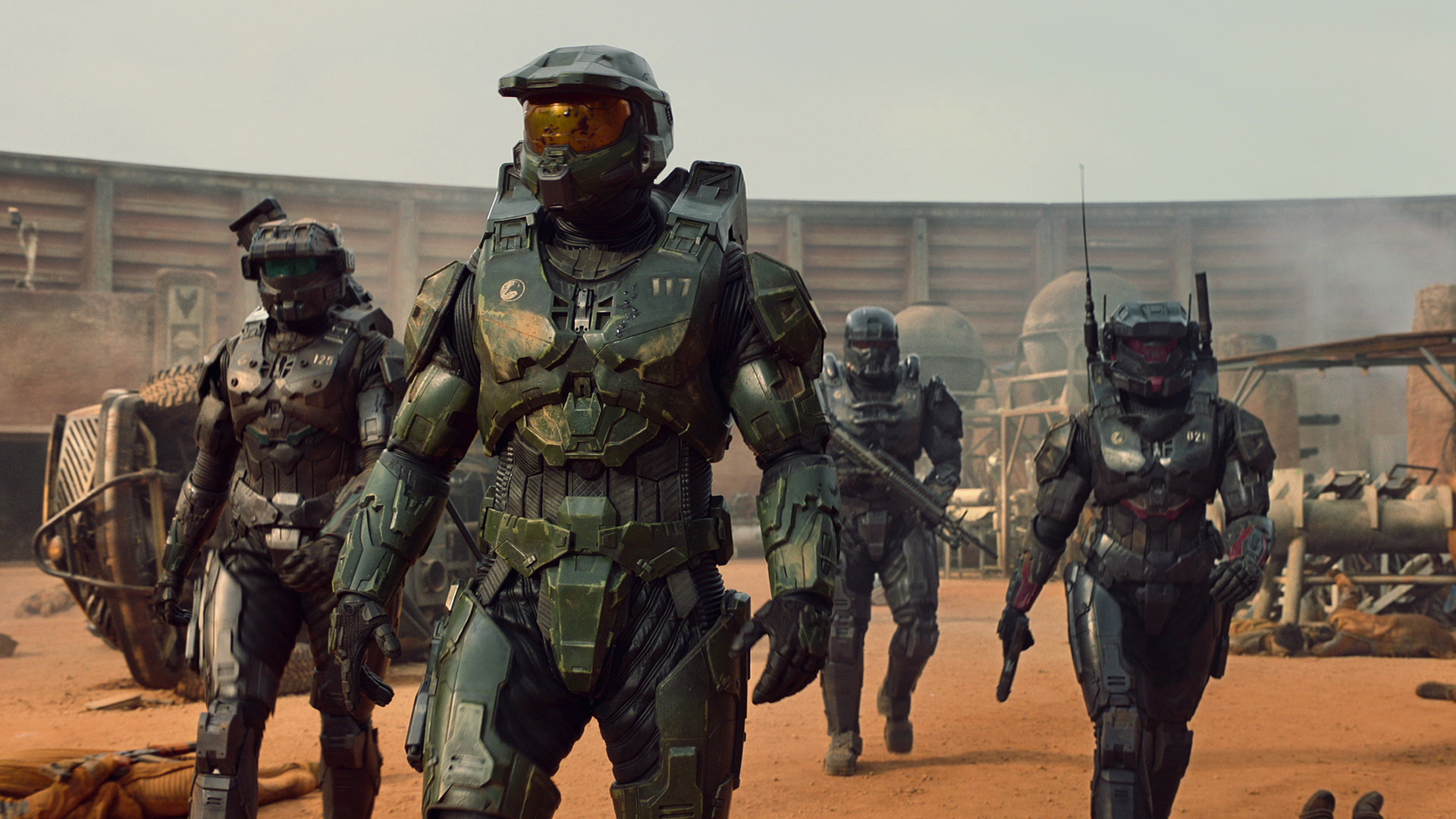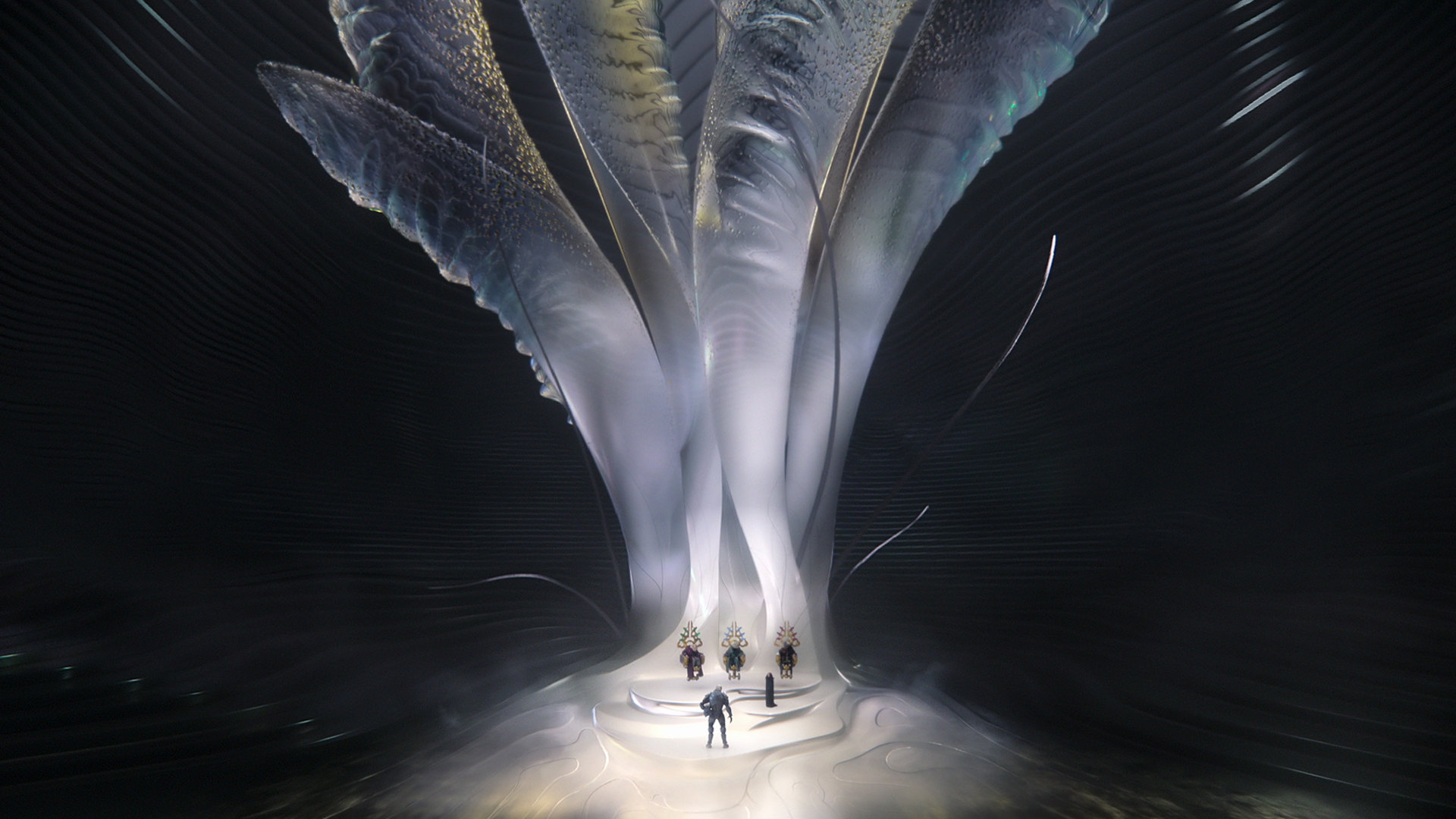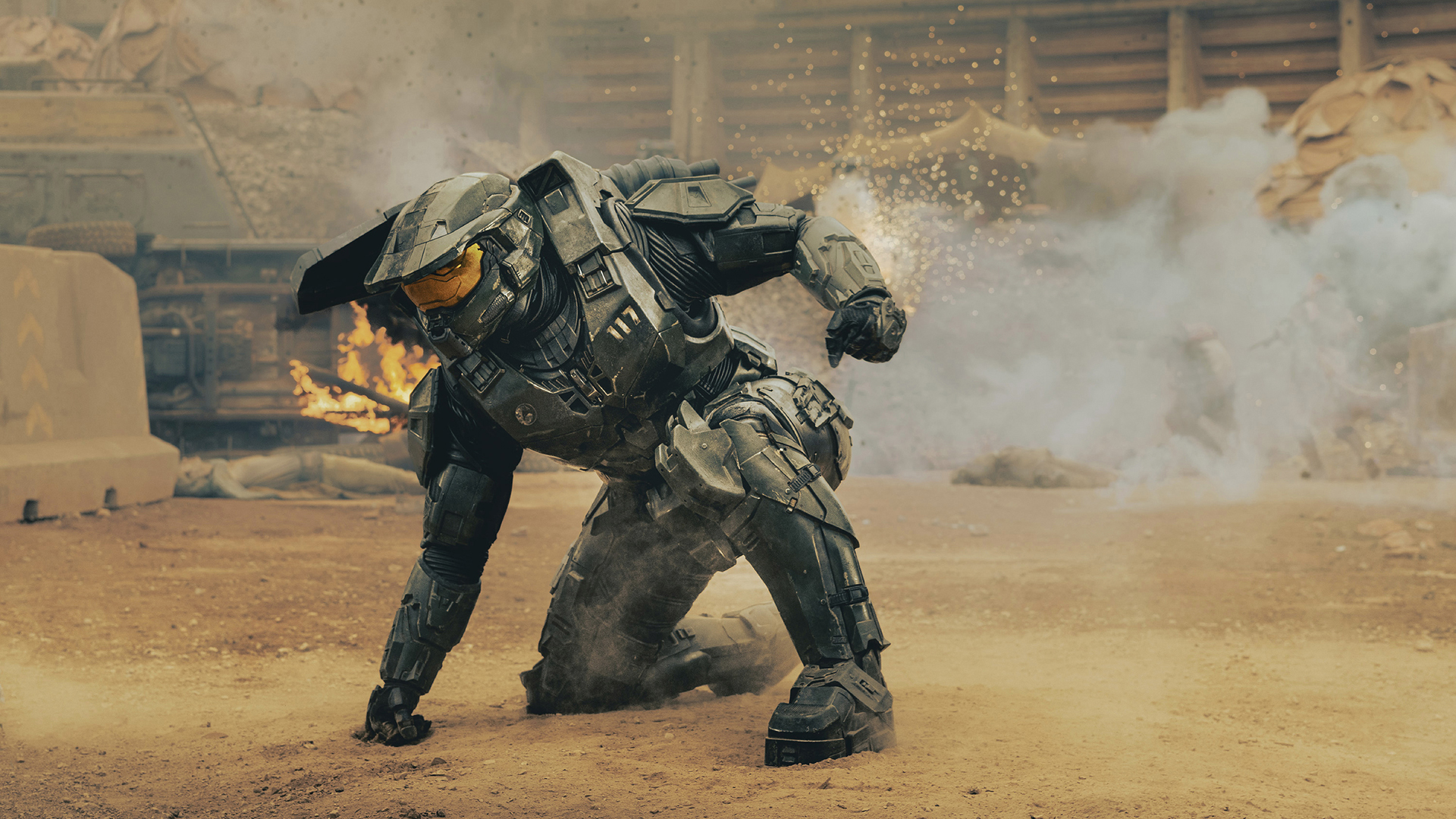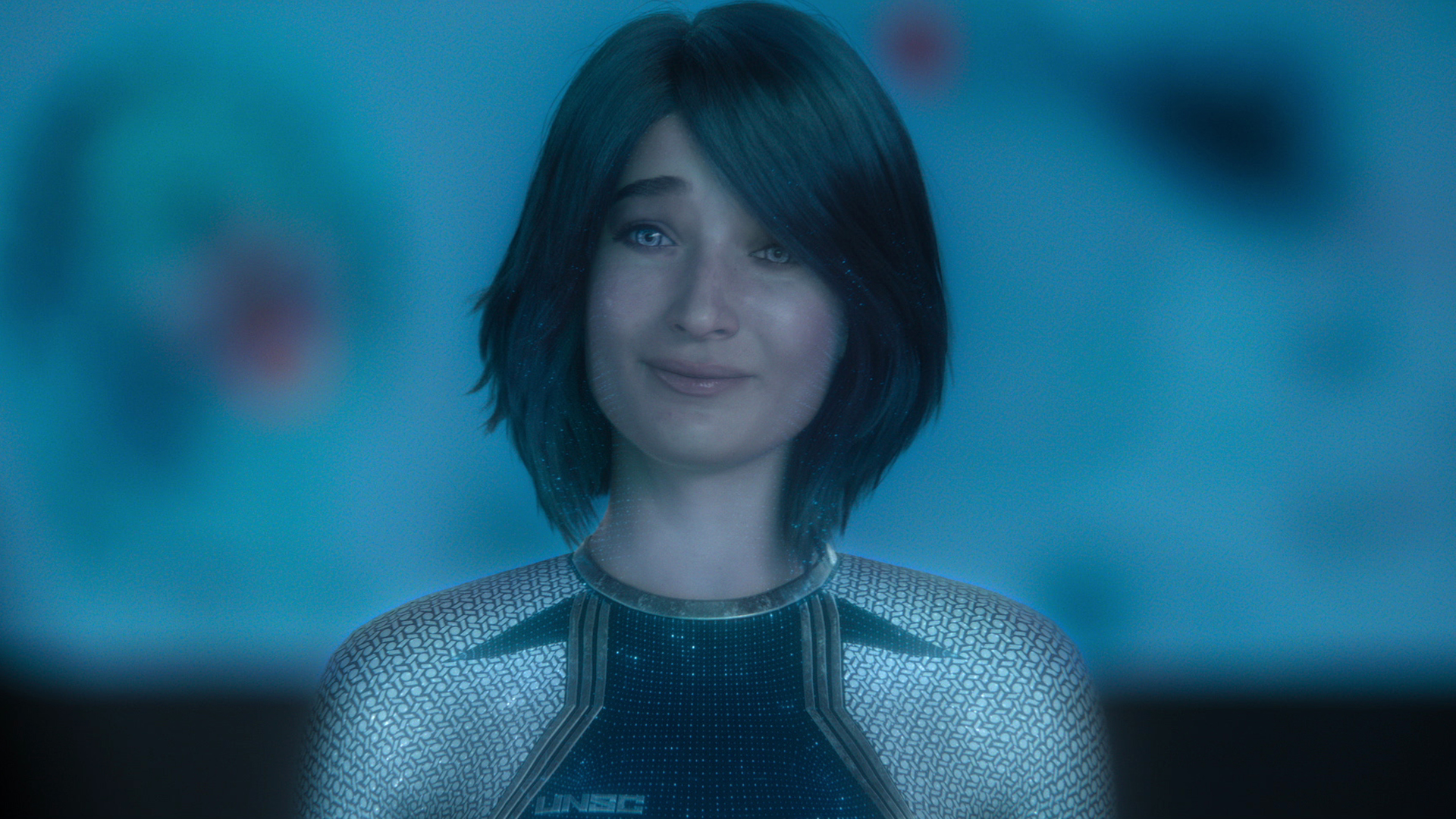Paramount's Halo TV series has an identity problem

“Who is this TV show or movie for?” – it’s a question that studio executives, writers, directors, and producers need to ask themselves before embarking on a new project. It’s a crucial one to answer, too. Understanding your target audience is vital not only for the creative process, but also for a movie or show’s potential success.
That’s particularly true for live-action adaptations of beloved video game franchises. Indulge long-time fans only, and your fan service-y project won’t appeal to general audiences. Craft something with a broader range of viewers in mind, though, and you’re likely to alienate established fans, just like the Tom Holland-starring Uncharted movie did.
The Halo TV series doesn't fall into either category, but it commits a far greater sin as a result: it doesn’t know who its core audience is. Paramount Plus’ live-action adaptation of Xbox’s iconic video game series has spent the past seven years in development hell. During that time, you would’ve expected its chief creative team to determine who they’ve created the TV series for.
Disappointingly, that’s not the case. Halo’s TV adaptation falls into the trap of pandering to both camps – that is, diehard fans and everyday audiences. Subsequently, it’s an imbalanced and lackluster sci-fi adventure – based on its first two episodes, at least – that will struggle to please either party.
Wake up, John

Set in the year 2552, the Halo TV series follows John-117/Master Chief (Pablo Schreiber), a Spartan-II soldier who leads humanity’s fight against an alien threat known as the Covenant.
After Master Chief and Silver Team – the Spartan squad he leads – defeat an Elite Covenant scouting party on the planet Madrigal, the group discovers a mysterious object that could hold the key to ending the Human-Covenant war. As each army vies for control of the intriguing item, though, a shock revelation leaves Master Chief questioning not only the mission he’s been assigned but also himself.
This opening narrative salvo is the show’s most glaring issue, and is the root cause behind its identity crisis. For starters, viewers unfamiliar with the Halo universe won’t know who Master Chief is. Or what the United Nations Space Command (UNSC) is. Or that the Covenant comprises multiple alien species, hence their different physical appearances.
Sign up for breaking news, reviews, opinion, top tech deals, and more.
Sure, filling the first episode with reams of plot and character exposition would be a bad move on the part of the show’s chief creative team. The narrative would move at a glacial pace, character introductions would feel forced, and action sequences may take a backseat to any ‘here’s what you need to know about the Halo universe’ explanations.
There’s no denying, though, that some viewers will be confused about multiple aspects of the TV series’ plot, plus the history of the wide franchise. What’s the Spartan super-soldier program? Why is humanity at war with itself before the Covenant’s arrival compels them to join forces? How come Master Chief is so revered among the UNSC’s military and despised by the Elite warriors that call him “demon”?
Such queries are sure to be answered, for those new to the Halo universe, as the season progresses. But, for a show that needs to grab viewers’ attention – and keep it, especially when there’s so much competition from Netflix and other streamers' immeasurable amount of content – Halo isn’t exactly forthcoming with key information early on.

Long-time Halo fans may feel similarly let down by the show’s story. This isn’t a beat-for-beat retread of the games’ overarching narrative. Instead, the Halo TV series exists on the Silver Timeline – an alternate reality that borrows heavily from the mainline games, with Halo’s plot told from a new but not necessarily improved perspective.
Making changes to the plot from Halo's game series, though, doesn't mean that the TV adaptation is absolved of criticism. Master Chief, for example, doesn’t emerge from cryosleep to fight off invading Covenant forces on the Pillar of Autumn as he does in 2001’s Halo: Combat Evolved. Here, he’s introduced as the savior of a Madrigal-based outpost, which is hopelessly outgunned by the Elite scouting party. It’s a crowd-pleasing introduction but, for a series that focuses on John-117’s journey, delaying his arrival until the premiere’s second quarter is an odd decision to make. We’re introduced to original characters, such as Kwan Ha (Yerin Ha), before Master Chief and other prominent individuals including Doctor Catherine Halsey (Natascha McElhone), too. Halo fanatics may find that hard to stomach, even if Kwan is a welcome addition to proceedings.
The faithful recreations of Halo’s weapons and vehicles are sure to raise a smile.
Other source material deviations have further exasperated Halo’s fanbase ahead of release. The redesign for Master Chief’s AI companion Cortana (Jen Taylor), plus Charlie Murphy’s Makee – a human who works alongside the Covenant – are two creative changes that have drawn ire from die-hard fans. The revelation that Master Chief removes his helmet to show his face has similarly led to fan outcry, despite lead star Pablo Schreiber’s defense of such a move. Even the planet Reach, which is decimated by the Covenant before the events of Combat Evolved in the games, is untouched at the start of Paramount’s Halo series.
Taking creative liberties with movie and TV adaptations are part of the development process. What works in a video game may not necessarily translate well to the big or small screen, so altering portions of Halo’s lore were bound to happen. Reshaping such key elements from the game series, though, will be sacrilegious to many Halo fans.
'I need a weapon'

These sweeping changes are a crying shame, too, when you consider how much love, care, and attention has gone into the TV show's other aspects. Make no mistake, the production value is very impressive. Paramount’s live-action adaptation reportedly cost between $90 million and $200 million to make – and, regardless of which figure is closer to the truth, it shows.
If the show’s narrative changes make (or will make) established fans bristle, the faithful recreations of Halo’s weapons and vehicles are sure to raise a smile. From assault rifles and jeep-like warthogs to battle rifles, and from Covenant phantom ships to chainguns and the armor that each Spartan wears, those behind Halo’s TV series have lovingly replicated central elements of the mainline games. The designs of each Covenant race, such as the Prophets and Elites, have also been authentically copied over from the games – although, the Elites do look a bit more brute-ish than they do in the first-person shooter series.
The sheer amount of Halo game references and Easter eggs present in the TV adaptation is highly satisfying, too. Sound files, such as the Elites’ ‘wut wut’ call and the depleted Spartan shield warning noise, have been carried over from the games and used correctly here. Characters occasionally dual-wield weapons as players could in Halo 2, while other ordnance items, including the Elites’ cloaking device, also make appearances. Taylor’s voicing of Cortana – the iconic role she reprises from the games – and the legendary Halo theme have a place in the TV show. There are even references to Halo’s expanded universe from the novels, such as the asteroid belt-bound location known as The Rubble.

All of these elements, and so much more besides, make it more galling that Paramount, 343 Industries, and Amblin Television didn’t lean further into the fan-centric angle of the Halo TV series’ production. Major Halo fans would enjoy it far more if it had, even if it meant that the show sidelined general audiences in favor of Halo’s primary fanbase. I certainly would have appreciated it, and relished the fact that a live-action adaptation of one of my favorite game series did justice to its expansive source material.
It’s rare for film or TV adaptations to strike a satisfying balance between different audiences. Netflix’s Arcane is an example of how to get this right; a show that simultaneously honors what’s come before while making its story accessible to newcomers.
The Halo TV series, though, doesn’t succeed at either. Its significant source material deviations mean that long-time fans will grumble at its unnecessary changes, while general viewers may not be able to fully engage with its scattergun approach to storytelling.
The Halo TV show isn’t exactly forthcoming with key information early on.
There are parts of Halo’s TV show that are good. Its production value is second to none, Schreiber’s Master Chief is a wonderful take on a character made famous by Steve Downes in the games, and its action is thrilling and tense on occasion. It doesn’t shy away from Halo’s penchant for gratuitous violence, either.
Still, this exclusive Paramount Plus series feels like a missed opportunity. Weighed down by fan expectations that grew exponentially during its lengthy development cycle, it could’ve been so much better than the sum of its parts. Sure, a second season has already been greenlit, so these teething issues can be ironed out in future episodes. If they are, Halo's TV adaptation may be salvageable. It remains to be seen, though, if the TV show’s Master Chief, just like his video game counterpart, will be given more time after season 2 airs to finish the fight.
The Halo TV series launches exclusively on Paramount Plus on Thursday, March 24.
As TechRadar's senior entertainment reporter, Tom covers all of the latest movies, TV shows, and streaming service news that you need to know about. You'll regularly find him writing about the Marvel Cinematic Universe, Star Wars, Netflix, Prime Video, Disney Plus, and many other topics of interest.
An NCTJ-accredited journalist, Tom also writes reviews, analytical articles, opinion pieces, and interview-led features on the biggest franchises, actors, directors and other industry leaders. You may see his quotes pop up in the odd official Marvel Studios video, too, such as this Moon Knight TV spot.
Away from work, Tom can be found checking out the latest video games, immersing himself in his favorite sporting pastime of football, reading the many unread books on his shelf, staying fit at the gym, and petting every dog he comes across.
Got a scoop, interesting story, or an intriguing angle on the latest news in entertainment? Feel free to drop him a line.